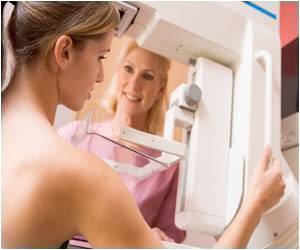It is not the same as calcification of the inner layer of the arteries (the layer that is in contact with the blood), which is typically found in people who smoke or those with high cholesterol levels.
Breast arterial calcification is a common finding that shows up as white areas in the breast’s arteries on a mammogram, however, it is not thought to be related to cancer.
“In an earlier study of this same research group, we reported that among women ages 60 to 79, 26% of the women had breast arterial calcification, and the percentage increased with age to more than half of women having evidence of the finding between ages 75 to 79 years,” said the study’s lead author Carlos Iribarren, M.D., M.P.H., Ph.D., a research scientist at the Kaiser Permanente Northern California Division of Research in Oakland, California.
Research has confirmed the calculators we currently use to assess an individual’s 10-year risk of developing heart disease are not as accurate in women as they are in men.
In the new study, researchers evaluated if breast arterial calcification, which can be easily seen on a mammogram provides more information about a woman’s risk of developing heart disease.
They reviewed health records on a subset of more than 5,000 women selected from among more than 200,000 women who underwent screening mammograms as part of MINERVA (MultIethNic study of brEast aRterial calcium gradation and cardioVAscular disease), a large, racially, and ethnically diverse cohort of postmenopausal women.
They found women who had breast arterial calcification present on their mammogram were 51% more likely to develop heart disease or have a stroke compared with women who did not have breast arterial calcification.
Currently, it is not the standard of care for breast arterial calcification visible on mammograms to be reported. Some radiologists do include this information on their mammography reports, but it’s not required.
Researchers hope that a new study will encourage an update of the guidelines for reporting breast arterial calcification from routine mammograms. Integrating this information in cardiovascular risk calculators and using this new information can help improve cardiovascular risk reduction strategies.
Source: Medindia



